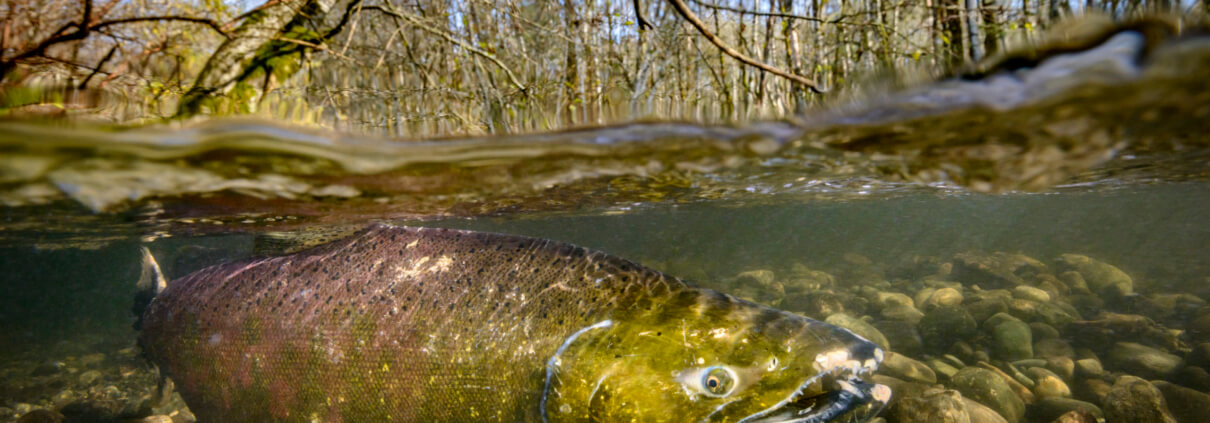Protecting Kelp for Salmon
The near-shore areas of Canada’s Pacific coastal waters are bordered with kelp forests that provide food and shelter for species that in turn support salmon. Forage fish like herring spawn on kelp. Kelp also become buffers from big waves, enabling small larval fish like eulachon to thrive under their protection. Moreover, Kelp are highly productive ecosystems unto themselves. A single kelp plant may have more than 10,000 individual snails, crabs and other invertebrates living on it and hundreds of fish swimming around it, in search of tiny prey.
People love kelp
In Canada, kelp is harvested for a compound called algin that is used as a gelling agent in foods like toothpaste and ice-cream, also in pharmaceuticals, and water and fireproofing fabrics. Women use it in face creams and other beauty products. Some health companies include it in naturopathic vitamins as a bone strengthener, thyroid regulator, for weight loss and more.
What is threatening kelp?
Land use changes and developments have led to a loss of natural habitat in BC estuaries. Human activities such as agriculture, forestry, and dredging for commercial and residential development have all contributed to losses. It is anticipated that the pressure to continue impacting estuary habitat for commercial facilities and residential units in coastal areas will grow in the near future. Integrated ocean management will help ensure that habitats like kelp are considered in coastal planning.
How will we protect kelp?
Through the Salish Sea Marine Survival Project, the Pacific Salmon Foundation is in the process of developing a Salmon Habitat Working group that will focus on developing consistent protocols for kelp mapping and restoration. The group will also work to address key scientific uncertainties around kelp. The project will partner with the University of Victoria to engage a Masters of Science student in assessing the importance of kelp habitats for juvenile salmon. The project will also include strategies for research and restoration of eelgrass beds.


